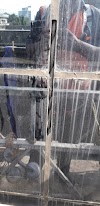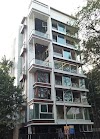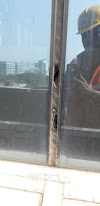When we talk about health and hygiene in urban environments, one silent contributor to bacterial spread often goes unnoticed — birds, especially pigeons. While many people feed pigeons out of compassion or habit, what follows is an unintended consequence — bacterial contamination through droppings, feathers, and nesting areas. But the truth is, pigeons are not the only culprits.
🦠 The Broader Picture of Bacterial Spread
Bacteria spread in the environment through multiple sources — not just from pigeons. Other birds such as crows, sparrows, and seagulls, and animals such as rodents and stray cats, also contribute to the spread of harmful microorganisms. These bacteria can contaminate open food, water sources, building surfaces, and indoor air.
Even our beloved pets—dogs, cats, parrots, and rabbits—can carry bacteria and allergens indoors. Pet fur, dander, and droppings can serve as breeding grounds for bacteria if not regularly cleaned. Similarly, human activities—visiting public places, using public transport, or walking through polluted streets—bring invisible bacteria and fine dust particles back home through clothes, shoes, and hair.
🏙️ The Role of Society and Surroundings
Uncleanliness in public areas such as waste dumps, open drains, food stalls, and neglected construction sites worsens the spread of bacteria and allergens. Even if we stop feeding pigeons, they will still find food elsewhere and leave droppings in their resting places. Complete elimination is unrealistic; what we need is effective prevention and control.
The concern today is not merely about the presence of pigeons — it is about the invisible bacteria and contaminants that enter our living spaces and affect our indoor air quality.
🌬️ The Modern Solution — Nanofiber Mesh
To maintain cleaner indoor environments, Nanofiber Mesh provides a revolutionary solution. It acts as an invisible barrier that allows only fresh air to pass while restricting bacteria, dust, and allergens from entering.
🔹 Product Features of Nanofiber Mesh:
-
Comes in roll form with a width of 1.5 meters and length of 70 meters.
-
Available colors: Black (default), Light Grey, and Light Yellow.
-
Thickness: 0.38 mm — ultra-thin, lightweight, and easy to handle.
-
Can be installed in sliding shutters of windows just like glass or mosquito nets.
-
Installation options: Velcro or PVC strip mounting.
-
Effectively restricts PM 2.5, fine dust, pollen grains, bacteria, insects, fly ash, allergens, and even water droplets.
-
Blocks UV and IR rays, reducing heat transfer by more than 50%.
-
Ensures excellent air permeability and high filtration capacity — allowing only pure air to pass through.
-
Highly tensile, non-corrosive, and easy to clean — simply rinse with water.
In short, Nanofiber Mesh is not just a filter; it is a smart investment toward better Indoor Air Quality (IAQ), healthier homes, and sustainable buildings.
For more details, visit 👉 https://lwsfacade.com/nano-fiber-mesh.html
🌱 Let’s Rethink Hygiene
The challenge is not just about birds or pets — it’s about how we manage our environment and living spaces. By maintaining cleanliness and adopting air filtration innovations like Nanofiber Mesh, we can create healthier, safer, and more energy-efficient buildings for everyone.
Director,
Landscape Wall Systems
9819 663 630












0 Comments